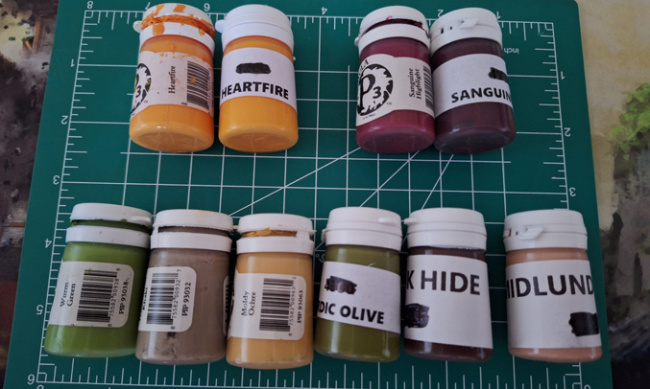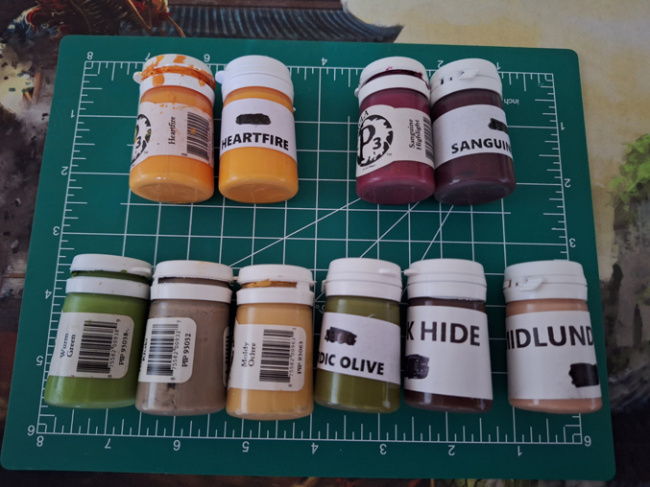Now, for those of you unfamiliar with the Formula P3 paint line, it was an interesting one because the paint had very specific usages, rather than just being bases and highlights. While Privateer Press probably intended it to be used mostly as base paints for Warmachine models, most hobbyists likely used it for all kinds of things that weren't that. The paint formula had two very unique qualities that its peers (Citadel, Vallejo, etc) didn't have. For one, it stayed wet longer and was thicker, so it made the technique known as wet blending a whole lot easier. Wet blending is exactly as it sounds; the painter blends two paint colors together on the model to create fading or cascading effects.
The other unique quality of this paint line was that it had a fairly high pigment load. This made the Formula P3 ideal for developing layer saturation, which could later be changed by applying washes or just left alone to produce a vibrant color. The paint line was absolutely amazing for producing bright highlight layers, which every fantasy miniatures painter always needed to create "magic" effects on staves, swords, and wands. P3 paint colors also often offered better options to existing Citadel Technical colors, especially when it came to creating "glowing" effects on Warhammer 40,000 miniatures.
Upon receiving the new P3 paints from SFG, I put them to the test on some miniatures projects that have been sitting around for a minute or two (I could easily paint a miniature a day for the next two years and never get through all the stuff in my office).
The story continues in the Gallery below!
The opinions expressed in this column are solely those of the writer, and do not necessarily reflect the views of the editorial staff of ICv2.com.





 View Gallery: 18 Images
View Gallery: 18 Images